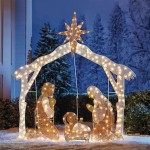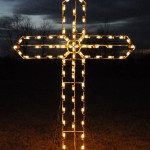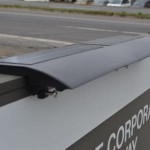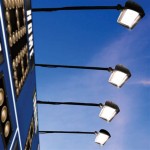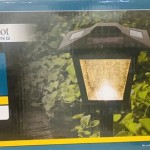Outdoor Lighting Electrical Requirements
Outdoor lighting is an essential aspect of any property, enhancing security, aesthetics, and functionality. To ensure safe and effective operation, it is crucial to understand the electrical requirements specific to outdoor lighting installations. This article will delve into the key aspects of outdoor lighting electrical requirements, covering factors such as voltage, wiring, grounding, and code compliance.
Voltage and Power Requirements
The voltage and power requirements for outdoor lighting vary depending on the type and size of fixtures being installed. Most outdoor lighting fixtures operate on standard household voltage (120 volts), but some larger fixtures, like those with high-intensity discharge (HID) bulbs, may require 240 volts. It is essential to choose fixtures that are compatible with the available voltage supply. The power requirements, measured in watts, will determine the size of the circuit breaker and the amount of current the wiring needs to handle. Higher wattage fixtures demand larger circuits and thicker wires.
Wiring and Cable Selection
Outdoor lighting installations require specific wiring and cable types designed to withstand the elements. The most common type of cable used for outdoor lighting is direct burial cable, which is encased in a waterproof jacket and can be directly buried underground. Other options include armored cable (BX cable) or underground feeder cable (UF cable). When choosing cable, consider its ampacity, which refers to the maximum current it can safely carry, and its insulation rating, which indicates its resistance to moisture and temperature extremes. As a rule of thumb, use cables with a larger ampacity than required for the fixtures to ensure safe operation and prevent overheating.
Grounding and Safety
Grounding is an essential safety feature in outdoor lighting installations. Proper grounding helps to prevent electrical shocks and protect the wiring from damage in case of a fault. All metal components of the fixtures, such as the housing, mounting brackets, and conduit, should be connected to a ground wire, which typically runs back to the main electrical panel. The ground wire acts as a path for electricity to flow in the event of a fault, diverting it to the ground instead of passing through the human body or damaging the wiring. Grounding should be carefully inspected and maintained to ensure proper functionality.
Code Compliance and Permits
Outdoor lighting installations must comply with local electrical codes and regulations. These codes specify the types of wiring, fixtures, and installation practices that are considered safe and appropriate. Familiarize yourself with the relevant codes in your area and obtain any necessary permits before commencing work. It is advisable to consult with a qualified electrician to ensure that the installation meets all code requirements and safety standards.
Outdoor Lighting Fixture Types
Different types of outdoor lighting fixtures come with specific electrical requirements. Common fixture types include:
- Floodlights: These are powerful lights used for security or illuminating large areas. They often require higher wattage bulbs and larger circuits.
- Path lights: These are smaller lights designed to illuminate walkways, paths, and steps. They typically operate on lower wattage bulbs and smaller circuits.
- Landscape lights: These lights are used to highlight and accentuate landscaping features. They may include a variety of fixture types and wattages, depending on the desired effect.
- Decorative lights: These lights are used for aesthetic purposes and can range from string lights to elaborate holiday displays. They often require special wiring and connectors.
Lighting Control Systems
Outdoor lighting can be controlled through various systems, each with specific electrical implications. Some common control methods include:
- Manual switches: These are the simplest form of control, allowing users to turn lights on and off manually.
- Timers: Timers allow lights to be automatically turned on and off at set times, conserving energy and enhancing security.
- Photocells: Photocells detect changes in ambient light and turn lights on at dusk and off at dawn, providing automatic control.
- Remote controls: Remote controls offer wireless control over lights, allowing users to adjust brightness and turn lights on and off from a distance.
- Smart home systems: Smart home lighting systems offer advanced control options, including integration with other devices, voice control, and scheduling capabilities.
Understanding the electrical requirements of outdoor lighting installations is crucial for ensuring safe and effective operation.

Outdoor Lighting Specifications Scientific Diagram

How To Install A Yard Light Post Electrical Projects Home Wiring Lights

Outdoor Low Voltage Lighting Diy Family Handyman

Outdoor Lighting Basic Troubleshooting Tips Lanai Lights

How To Fit Outdoor Lights Lighting Electrical Security B Q

How To Install Outdoor Lighting And Home Electrical Wiring Diy

How To Install Outdoor Lighting And Diy Family Handyman

National Electric Codes For Outdoor Wiring

Residential Landscape Outdoor Lighting Faq

The 3 Best Smart Outdoor Lights For Backyards Of 2024 Reviews By Wirecutter
